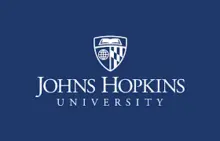The Johns Hopkins University opened in 1876, with the inauguration of its first president, Daniel Coit Gilman. "What are we aiming at?" Gilman asked in his installation address. "The encouragement of research ... and the advancement of individual scholars, who by their excellence will advance the sciences they pursue, and the society where they dwell." The mission laid out by Gilman remains the university's mission today, summed up in a simple but powerful restatement of Gilman's own words: "Knowledge for the world." After more than 130 years, Johns Hopkins remains a world leader in both teaching and research. Eminent professors mentor top students in the arts and music, the humanities, the social and natural sciences, engineering, international studies, education, business and the health professions. Those same faculty members, and their research colleagues at the university's Applied Physics Laboratory, have each year since 1979 won Johns Hopkins more federal research and development funding than any other university. The university has nine academic divisions and campuses throughout the Baltimore-Washington area. The Krieger School of Arts and Sciences, the Whiting School of Engineering and the School of Education are based at the Homewood campus in northern Baltimore. The schools of Medicine, Public Health, and Nursing share a campus in east Baltimore with The Johns Hopkins Hospital. The Carey Business School is located in Harbor East in downtown Baltimore. The Peabody Institute, a leading professional school of music, is located on Mount Vernon Place in downtown Baltimore. The Paul H. Nitze School of Advanced International Studies is located in Washington's Dupont Circle area.
Related Institutions
Contact Information
Contact Email
(410) 516-6971
Contact Phone
Location
3400 North Charles Street
21218 Baltimore , United States



